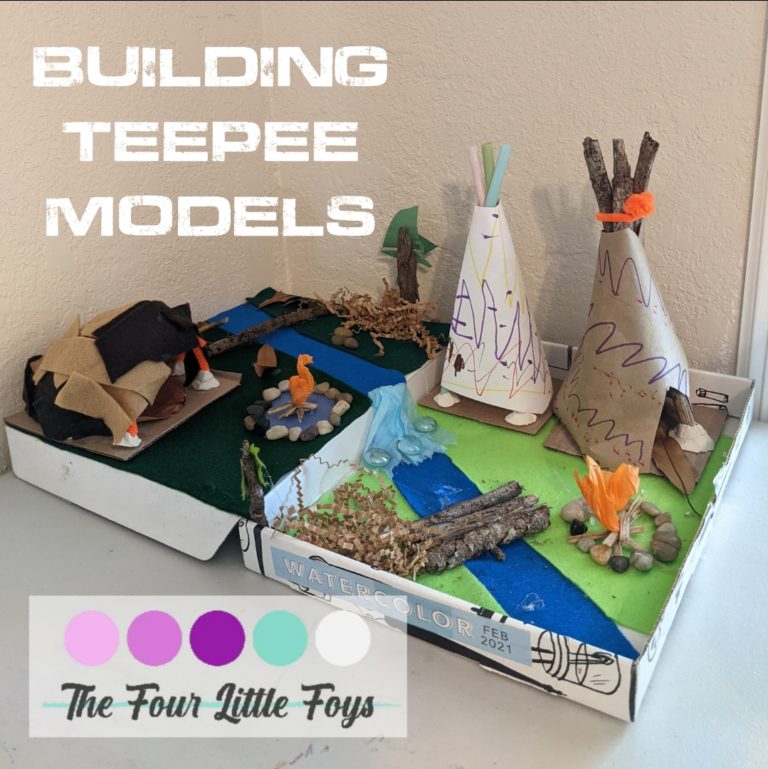
We did a week of learning about some of the Native American tribes that were in the United States before the explorers and colonists came across the oceans. We learned some of the major tribes that lived in the various regions and what they were known for. Many on the east coast farmed, which was helpful for our first settlers to learn. Further west there were more that were hunters.
We also learned about their different types of homes. They all had different homes based on their needs and the supplies available to them.
We decided that for our fun project, we would build two of the most well-known homes, the teepee, and the wigwam.
Teepees
Teepee were made with long poles that were tied on the top and spread out to make an upside cone. They were covered with buffalo hides and sometimes other things like grass to keep them warmer in the winter. The covering could be lifted in the summer to let more air in. These structures were normally temporary
To make our teepees the girls collected some long straight twigs from our backyard. We set them into some air dry-clay on a cardboard base. Then we tied them at the top with a pipe cleaner. We used paper to cover these so we could cut a door. The girls created some native American inspired art on their papers.
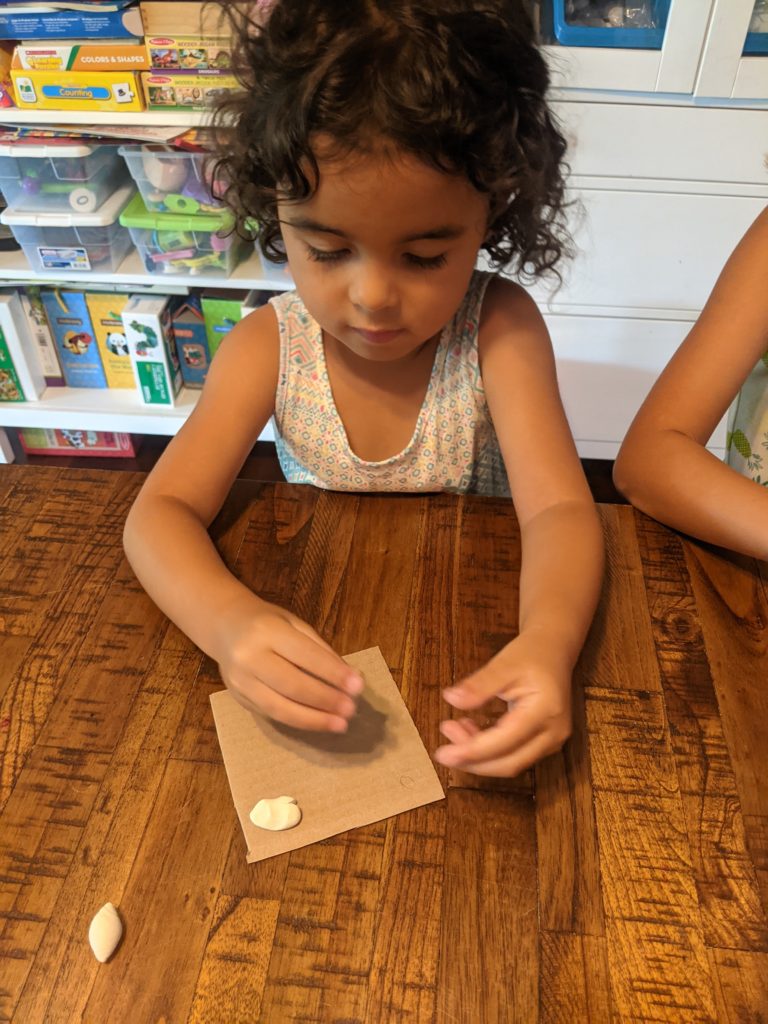
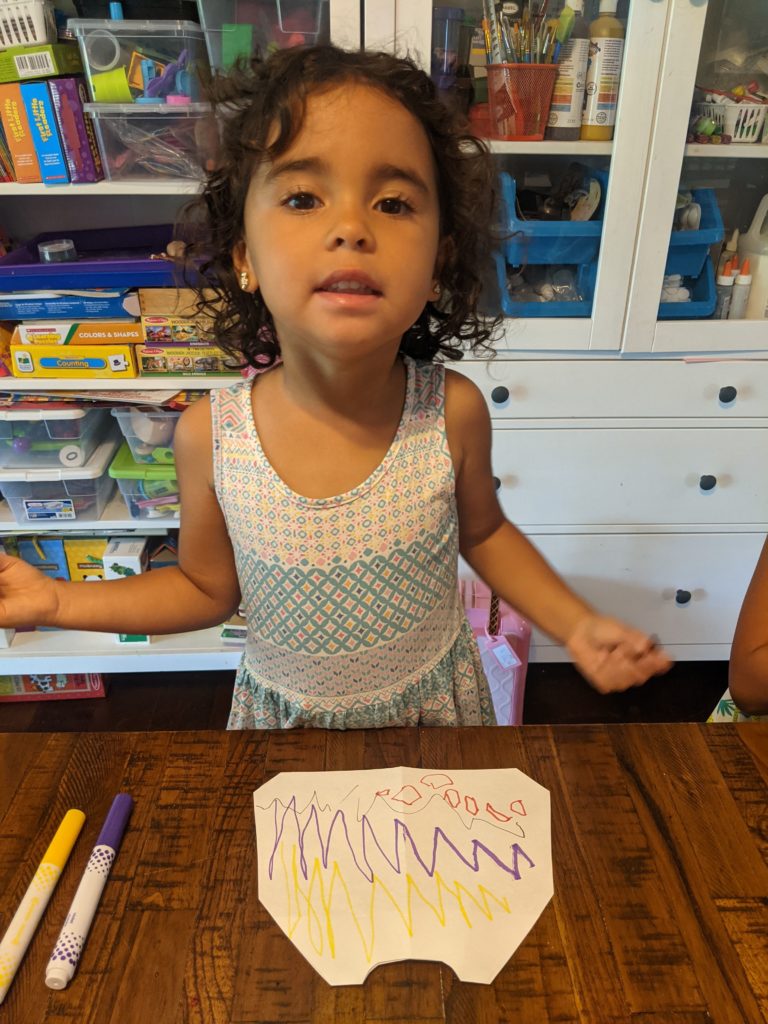
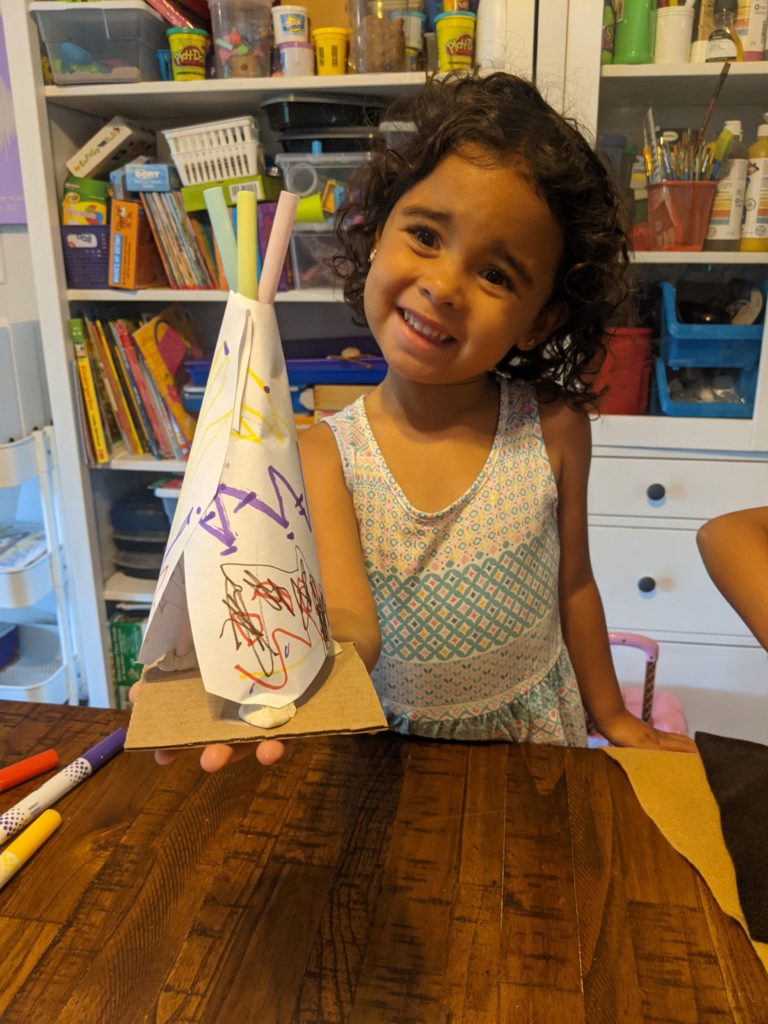
Wigwams
Wigwams were also made from wooden poles, but much thinner ones that would typically be bent into a dome shape. Then the dome was normally covered in bark or other natural material that was available in the area. These were more permanent structures.
To make our wigwams we used a cardboard base with some air-dry clay to hold pipe cleaner. We used a few more pipe cleaners around the dome to keep it stable. Brown felt hot-glued on to represent the bark.
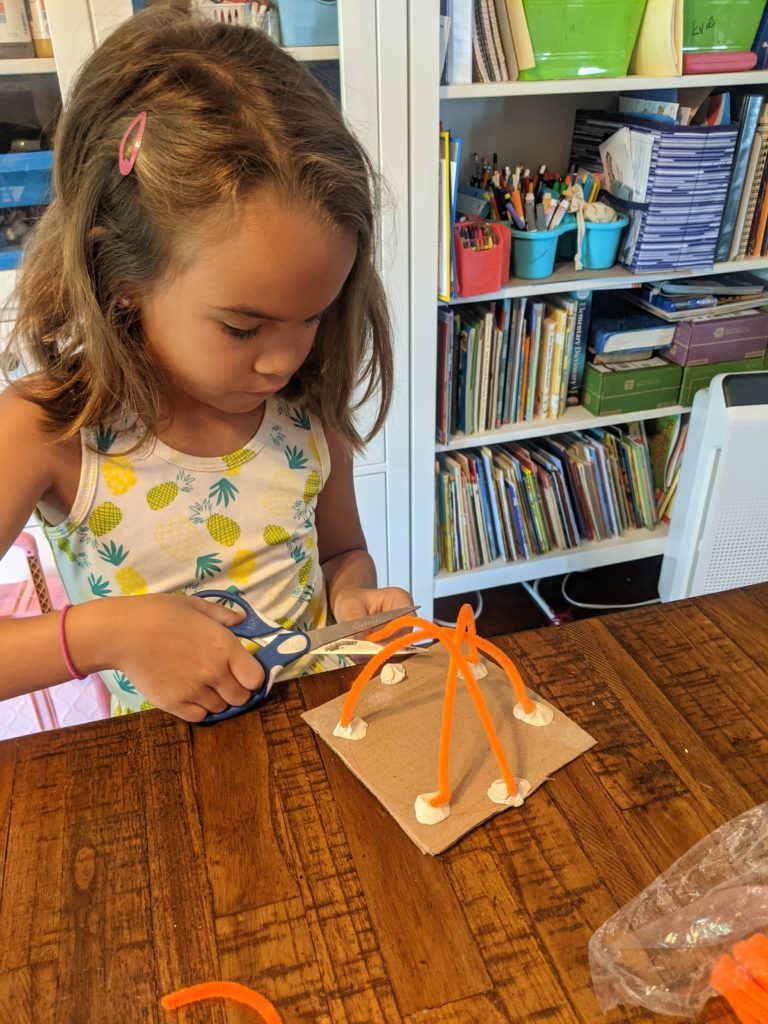
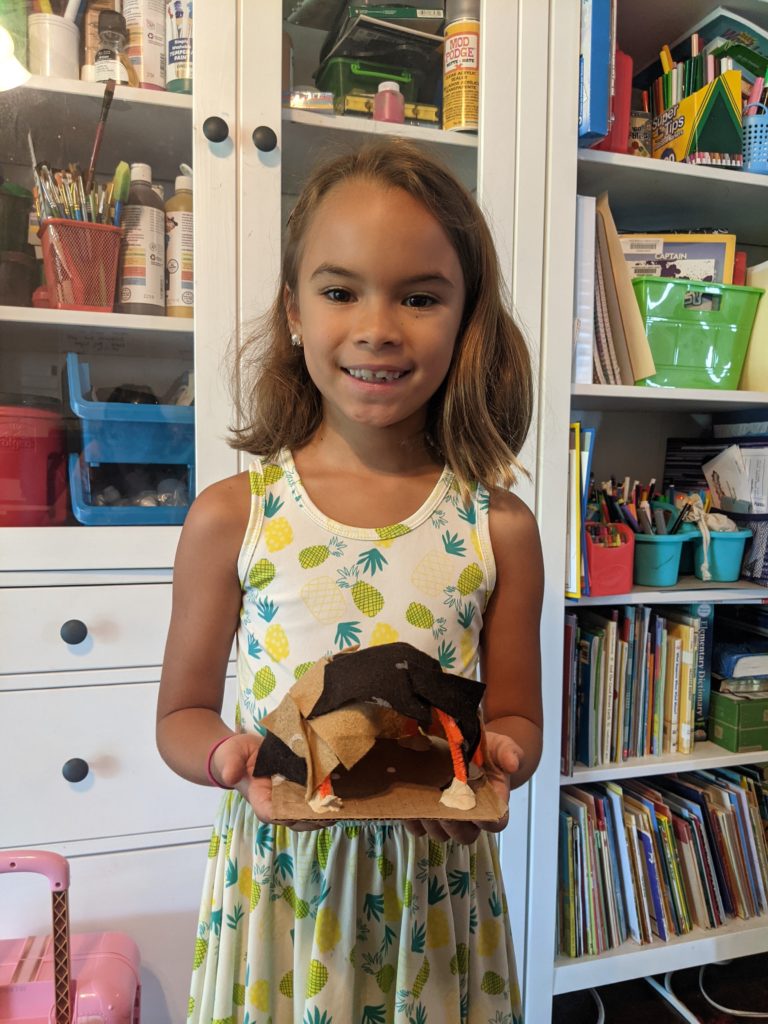
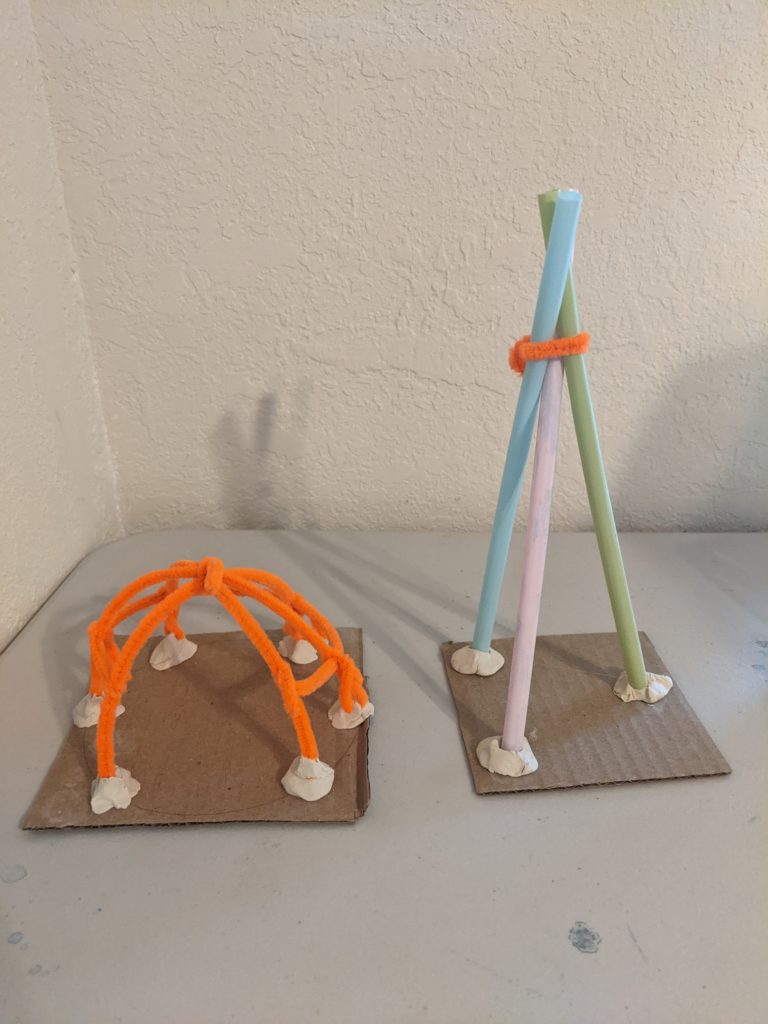
Our main goal was to build the structures but then the girls decided they wanted to make the whole landscape to go with it. We discussed what the settlers were looking for when establishing settlements and what the Native American Tribes probably also looked for. They decided they would probably build along river for a water source and fishing and a forest for lumber and probably food as well. They even built a fire and bridge in case the two sides wanted to visit each other.
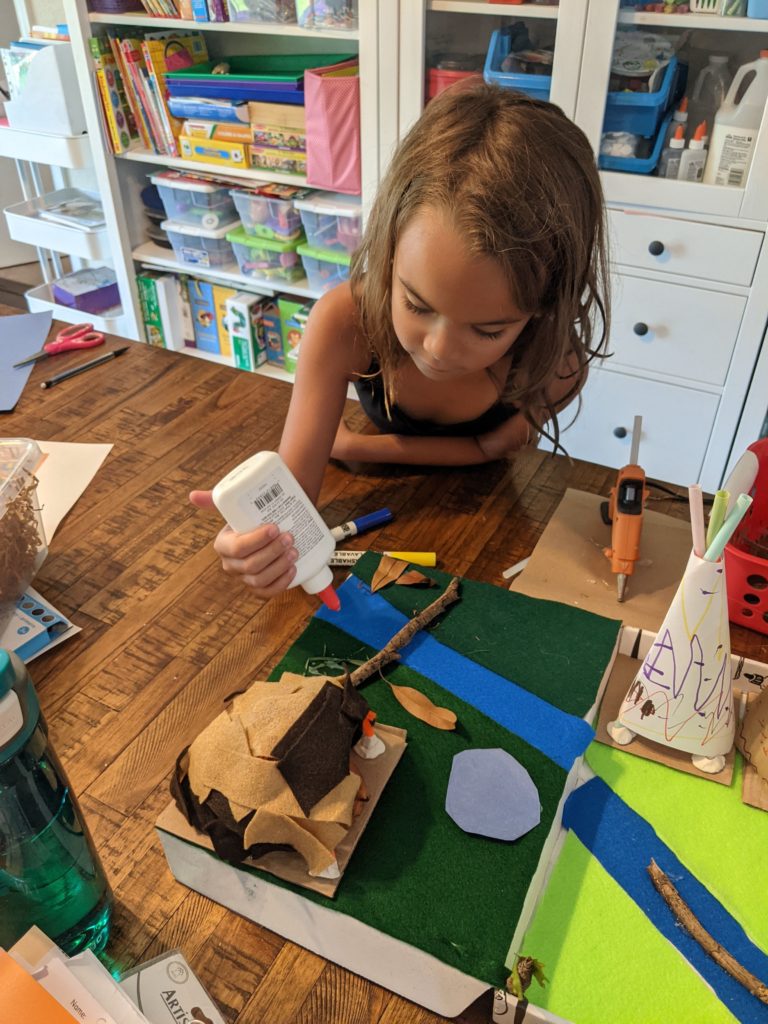
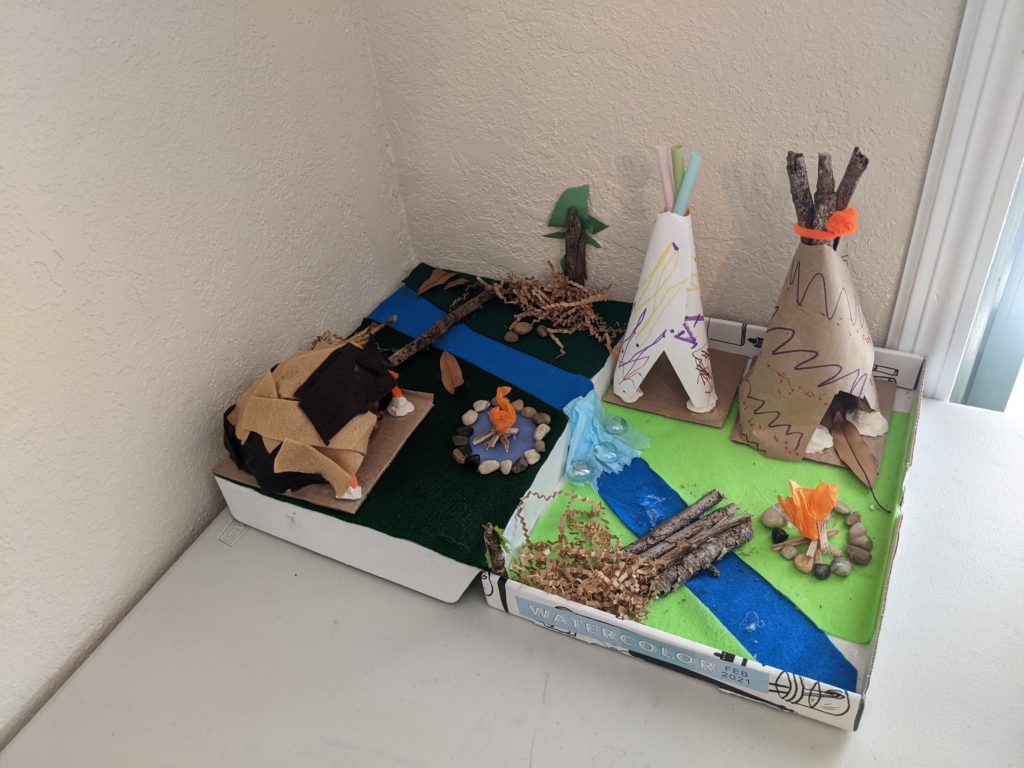
I can’t wait until we are camping so we can visit some of the Native American Museums to dig deeper into their history. We would love to see these artifacts made in full size models that we can go into it.
